Sardinia is a place where the sounds of an ancient world seem to echo in the silence of the morning. There are intense colours, secrets that peep out, legends, magical creatures half-man and half-beast, pagan rites, stone forests, fairies, and giants. Sardinia is a perfect balance between the uncontaminated Beauty our eyes can see and a world concealed beneath a veil too thin to remain hidden... Even in 2026, this feeling remains intact, perhaps even more alive:In this article, you will discover a land capable of letting your imagination fly like few others in the world, perhaps none at all.
We will talk about the sea and the best beaches of North Sardinia, its towns and villages, its breathtaking landscapes, the best places to visit from an architectural and artistic point of view, the signs of its millenary civilisation. Then we will get to know the typical handicrafts made by skilled hands, the museums that best represent the identity of this island, the excellence of the local food and wine. Finally, we will encounter perhaps the most intimate and authentic part of Sardinia and the Sardinian people: their festivals, traditions and events. Here, you will discover how magic merges with spirituality, how the past has never really passed, and how Sardinia embodies the very essence of Beauty, with all its mysteries, charm and contradictions.
What to see and what to do in North Sardinia: the journey starts now, let's go on this exciting adventure!

Visit Italy's super travel guide: What to see and what to do in North Sardinia

Can't wait to set off and explore all the wonders of the most fantastic island in the world? You're in the right place then! Pack your bags, and above all open your mind to best experience this fantastic adventure discovering a magical land. So here's what to see and what to do in North Sardinia, obviously with the super travel guide by Visit Italy. Enjoy the trip!
North Sardinia in 2026: a new balance to discover
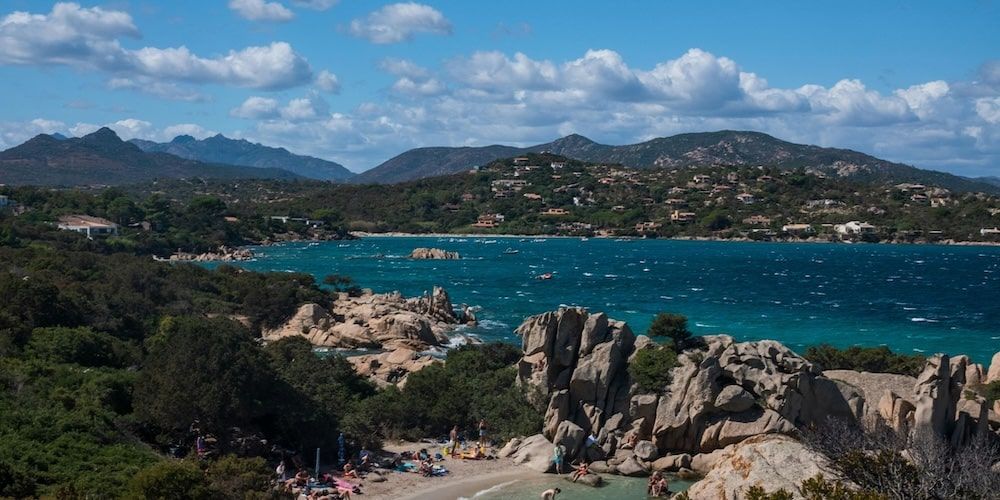
In 2026, North Sardinia presents itself with a more mature spirit, determined to highlight what truly sets it apart.
Along the coast, existing paths are being improved and more hidden trails are being restored, making it easier to reach spectacular headlands and secluded coves — viewpoints that once required more demanding routes.
At the same time, the inland villages are experiencing a quiet yet meaningful revival: ancient stone houses are being restored, small squares are coming back to life, events and local traditions intertwine with new and contemporary forms of hospitality.
In short, 2026 is a year in which North Sardinia chooses to reveal itself with simplicity and ease — no special effects, just the care of a magical landscape and an authentic welcome that invites you to slow down, look around, and let yourself be gently won over.
I come from an island that borders to the North with the sky, to the South with the sea, to the East with the dawn and the sunset to the West.
What to see in North Sardinia: the sea and all shades of blue

Hearing people talk about Sardinia and thinking about the sea is the most natural thing in the world. The North of the island offers some of the best beaches in Italy. A distinguishing feature of this island is the diversity of its beaches: one different from another to satisfy all tastes: from wide sandy beaches with fine sand, such as La Pelosa of Stintino or La Cinta di San Teodoro, to the red granite rocks of Costa Paradiso, to charming coves such as Cala Sarraina with its granite sand surrounded by pink rocks and Mediterranean scrub. From west to east, here are the best beaches on the North coast and the smaller islands that you should not miss during a summer holiday in Sardinia.
What to see in North Sardinia: the best beaches

La Pelosa beach Stintino
If you imagined gliding down from above like a breath of Mistral, the sea at La Pelosa of Stintino would look like a stretch painted with a fluorescent blue highlighter. This beach lies at the extreme north-western tip of the island, in the Gulf of Asinara, and is one of the most famous and award-winning in Europe. It is so beautiful that it looks like a painting. It has a light, soft, silver-coloured sand that slowly gives way to a Caribbean-hued sea that never seems to get deep. Behind it are dunes and junipers in front of the Isola Piana and the Asinara. It is separated from the open sea by its eternal symbol, the Pelosa tower (immediately opposite La Pelosetta beach) and the rugged dark promontory of Capo Falcone.
Costa Rossa and Costa Paradiso

Li Cossi Costa Paradiso
If you continue along the North coast, you arrive at the Costa Rossa, so called because of its granite cliffs. This is a still wild and little-explored part of Gallura compared to other more famous destinations, but it offers breathtaking views. Here, the Mistral wind has sculpted over the centuries a rugged landscape, never the same, where an emerald-coloured sea creeps among strangely shaped rocks. Suddenly, as we take the winding road to Santa Teresa di Gallura, we come to the promontory of Isola Rossa, a small island that turns the colour of fire at sunset, and the beautiful beach of Marinedda.
Further on, the evocative scenery of Costa Paradiso where pink granite and dense Mediterranean vegetation frame thousands of small inlets and fjords that give way here and there to unforgettable coves such as Li Cossi and Li Tinnari. Just beyond Costa Paradiso, Cala Sarraina seems to be the perfect place to enjoy crystal-clear water and all the scents of the Mediterranean maquis blending with the smell of salt.
Capo Testa and Valle della Luna

Valle della Luna (Moon Valley)
Just a few kilometres from Santa Teresa di Gallura, Rena Majore has coarse, grainy sand and is popular with snorkelling enthusiasts. Continuing northwards, you reach the beautiful promontory of Capo Testa, where Cala Spinosa is located, a hidden paradise. Embedded in this promontory is a surreal place called Valle della Luna (namely, Moon Valley). Its huge rock formations, small coves, and caves make it resemble lunar soil under the moonlight. It has been inhabited by a hippie community since the 1960s and is a destination for travellers, artists, musicians and the curious in search of peace and serenity.
Costa Smeralda and San Teodoro

Cala Brandinchi San Teodoro
We have now reached the northernmost tip of the island. The Costa Smeralda, the north-eastern part of Sardinia, is known for its glittering nightlife, exclusive boutiques and luxury residences. Moreover, there are plenty of breathtakingly beautiful beaches in this area (Liscia Ruja, Capriccioli, the Spiaggia del Principe, etc.). Just a few minutes away is San Teodoro, the ideal location for a holiday at a more affordable price than the places frequented by the VIPs of the Costa Smeralda. The latter is the perfect destination for those seeking the beauty of the sea and the nightlife. The surrounding area offers wide beaches and coves surrounded by rocks, including La Cinta beach, Cala Brandinchi and Cala Girgolu.
Discover San Teodoro by boat like a fishermanThe island of North Sardinia: Asinara, La Maddalena archipelago and Tavolara

Caprera Island
In addition to these famous beaches - some more easily accessible than other - there are many coves. Some of them are only known to the locals: here, peace and wonder reign supreme. You can be sure of one thing: the Sardinian Sea is never the same. As you go along the coast, you will notice that the landscapes, nature, colours and rock formations change... and you will see a number of smaller islands emerging from the water. These are true jewels where unspoilt nature dominates. Here, the sea is crystal clear and turquoise like few other places in the world.
Tavolara

Tavolara island
Tavolara is the island that dominates almost every view visible from the coast of San Teodoro. It is a 560-metre-high granite massif dotted with greenery that gives its name to the Tavolara-Punta Coda Cavallo marine protected area. The sea here is a dream for divers: you can dive into environments rich in biodiversity at Teddja Liscia and Secca del Papa. Here, you will come across the remains of ships and boats from every era. The island of Tavolara can be reached by ferry from Porto San Paolo.
Asinara

Asinara Island
Asinara is the island to the North of Sardinia, the extreme western tip of the gulf bearing the same name. It is also the tip of the whole island. You can appreciate it from La Pelosa beach. Asinara has been a National Park since 1997 and a marine protected area since 2002. Its particular history has preserved it as a world unto itself, both for its unspoilt landscape and for the survival of rare plant and animal species. Asinara has been isolated for over a century, especially since a maximum-security prison was set up there in 1975. With the institution of the park, it became visitable and is protected as a rare flower deserves. To reach it, you need to take one of the ferries that leave from Stintino or Porto Torres.
La Maddalena Archipelago

Cala Coticcio Caprera
The easternmost tip of Sardinia is home to the La Maddalena archipelago, which consists of more than 60 islands and islets. Here, the sea and sky seem to be competing to see who has the clearest blue, and the Mediterranean maquis accounts for about a third of all Sardinian flora and many rare species. Among these islands, the only one with an inhabited centre is La Maddalena, from which the archipelago takes its name, and which is the administrative seat of the National Park. The surrounding sea is part of the Marine Protected Area of the Cetacean Sanctuary, and the archipelago offers 180 kilometres of coastline with some of the most fascinating beaches in the Mediterranean. Most of them can only be reached by boat or on foot, so they remain protected and are the privilege of only a few people at a time.
It is difficult to choose the most beautiful; still, they undoubtedly include Cala Coticcio on the island of Caprera, the Spiaggia Rosa of Budelli, Cala Corsara and Cala Soraya on the island of Spargi. An interesting note about Caprera: here is the home of Garibaldi, also known as "The Hero of Two Worlds". He was one of the most famous personalities in Italian history who lived the last years of his life here. The Giuseppe Garibaldi National Memorial Museum is the most visited in Sardinia. To visit the archipelago there are ferries and boats departing from Palau.
What to see in North Sardinia: the cities of Sassari, Alghero, and Olbia

Olbia at sunset
Northern Sardinia has three major towns. Different in terms of location and history, each offers a unique experience that culminates in the traditional festivals. Locals have a deep connection with these events, an essential part of their identity. Here we suggest some ideas for visiting the three cities, while you will find a separate chapter about the most outstanding events in this area of the island.
Sassari

Piazza d'Italia Sassari
Sassari is one of the provincial capitals of Sardinia. It is the second largest town in Sardinia by population, and its territory is the fifth largest in Italy. Strolling through the city centre streets, you can admire beautiful palaces and places that are important to the Sassaresi, such as the La Marmora barracks (now a museum of the glorious Sassari Brigade) and Piazza d'Italia. Together with the Fontana di Rosello, the latter is one of the city's symbols. Among the places of art and culture are the museum Museo Nazionale Sanna and the Cathedral of San Nicola di Bari, built in a mixture of architectural styles ranging from Gothic to Baroque and Classical.
Alghero and Olbia
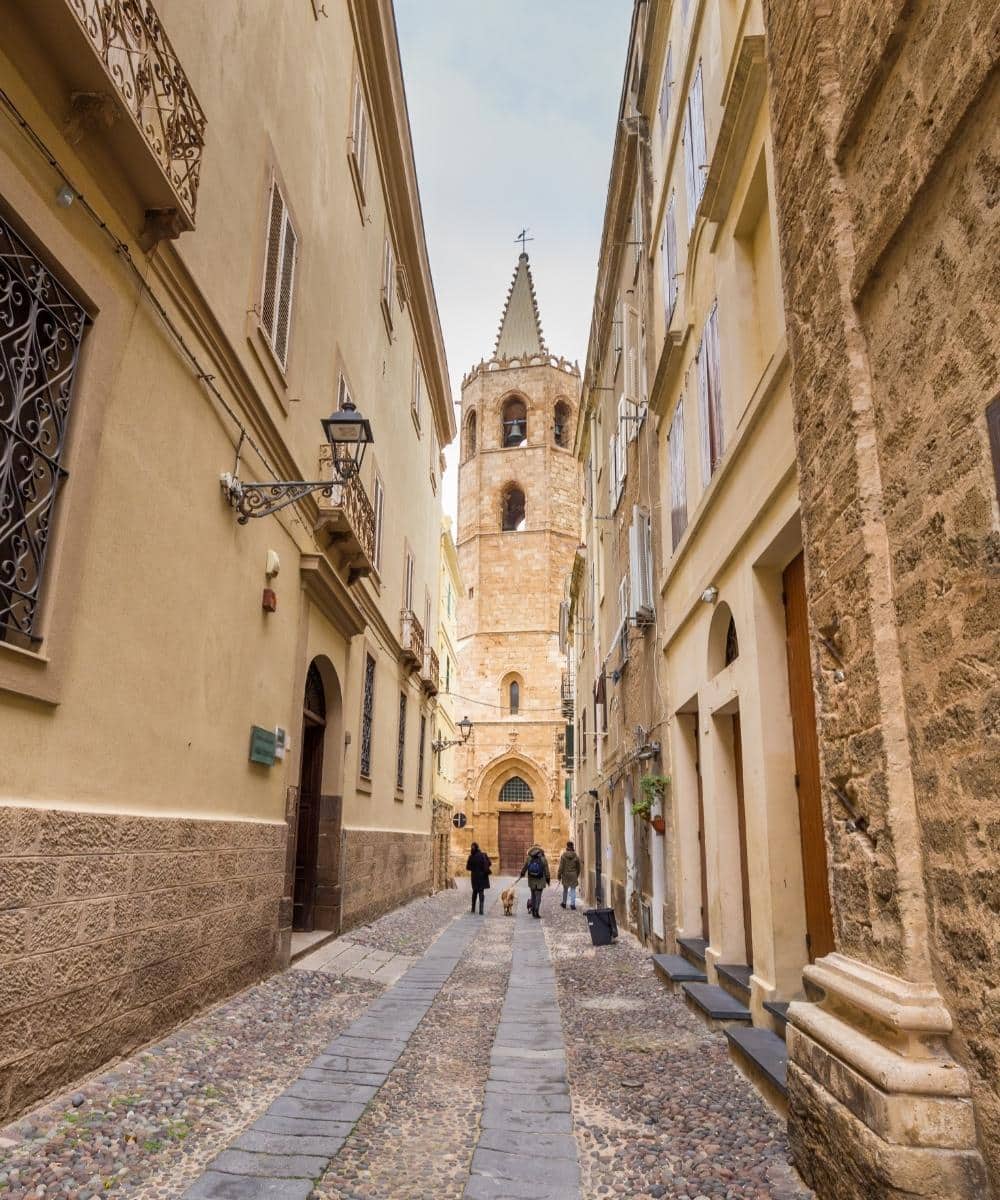
Alghero Sardinia
Overlooking the sea, Alghero is one of the favourite tourist destinations in the North of the island. It is also known as the Spanish city of Sardinia because of the long period under Catalan rule, whose customs and traditions are still preserved. The Catalan style can be seen both in the houses that line the narrow alleyways of the historic centre and in the language: in fact, one in five inhabitants speaks Catalan, in the local variant. It is also the capital of the Coral Riviera, and Alghero's red coral is recognised as one of the most precious in the Mediterranean, appreciated for its intense ruby colour.
Olbia lies on the gulf bearing the same name. It gives access to Costa Smeralda and is one of the most dynamic and vital cities on the island, thanks to its port and international airport, making it the leading tourist destination in northern Sardinia. The town is home to places of historical and archaeological interest, including Roman ruins and Bronze Age remains such as nuraghi, sacred wells and tombs of the giants.
What to see in North Sardinia: villages of Castelsardo, Palau and Porto Cervo

Palau
If we were to imagine a tour including the unmissable stops in the area, three of them would certainly deserve a visit: Castelsardo, Palau and Porto Cervo. Because of their historical interest, attractions, or a unique romantic charm you can't absolutely miss them.
Castelsardo

Castelsardo
Castelsardo is a village of views and landscapes. Here you can witness some of the most romantic sunsets in northern Sardinia. It rises on a promontory outstretched towards the Gulf of Asinara; it suddenly appears as a vision as you drive along the coastal road coming in from the West. The houses seem to climb the slope that ends with the Castello dei Doria, now home to the Museo dell'Intreccio Mediterraneo (a fascinating museum dedicated to the traditional art of weaving).
Palau and Porto Cervo

Porto Cervo
Palau is a village nestled in an inlet opposite the Maddalena Archipelago. The landscape is an alternating mix of clear waters and granite rocks shaped by atmospheric agents; during summer, its nights are filled with the joy of lights, events, and clubs. The port of Palau is one of the boarding points for the Archipelago de la Maddalena.
Porto Cervo, finally, is an exclusive seaside village on the north-eastern edge of the island and is the realm of luxury holidays. It is the capital of Costa Smeralda and, in summer, becomes a glittering parade of yachts and celebrities. The Porto Cervo lifestyle consists of breathtaking beaches, shopping in prestigious boutiques from the Piazzetta delle Chiacchiere to the Sottopiazza, exclusive clubs, parties, and sporting events, especially golfing.
We are the uninterrupted realm of the mastic tree, of the waves rushing over ancient granite, of the dog rose, of the wind, of the immensity of the sea. We are an ancient land of long silences, wide and pure horizons, bleak plants, mountains burnt by the sun and by revenge. We are Sardinian.
What to do in North Sardinia: check out the stunning nature of the island

Nature is the world's greatest artist, and imagining Sardinia, it seems to have used all its fantasy. Sardinia is not only sea. It is beautiful every season including winter and autumn, from East to West and from North to South. Among the attractions and must-see places in the North, the weather over a long time created spectacular sights. Here, the wind blows hard, the sun beats strong, and the result is a strong nature, sometimes harsh, sometimes romantic, always capable of enchanting whoever is there to admire it.
Promontory of Capo Caccia

Escala del Cabiròl Capo Caccia
Looking out over the horizon from the town of Alghero, a long, flat shape rises from the sea. We are talking about the Capo Caccia promontory, with its 300-metre-high white cliffs overhanging the water. It is home to birds such as the griffon vulture, which can reach a wingspan of three metres. But the surprises of Capo Caccia do not end here. The sea has carved out caves inside the limestone giant over thousands of years. It looks like the fairytale scenarios of an underground world with stalactites, stalagmites, columns and a lake: the Grotta di Nettuno (Neptune's Cave). You can get there by walking down the Escala del Cabiròl (654 steps) or by taking the shuttle bus from the port of Alghero and Cala Dragunara.
Valle della Luna in Aggius

Moon Valley Aggius
The Valle della Luna of Capo Testa is not the only one in Sardinia with this name. In the territory of Aggius, in the most intimate and deepest Gallura, there is another Valle della Luna (namely, Moon Valley), also known as Piana dei Grandi Sassi (or Plain of the big stones). Here you can listen to the wind blowing in total silence, caressing a landscape dotted with strangely shaped granite rocks, similar to the moon. This flat but uneven expanse has a great naturalistic value because it is a "unicum" comparable to a few other European areas.
What to see and what to do in North Sardinia: the silent rock guardians

They have been there since the dawn of time, sculpted by the impetuous and patient wind and rain. Sardinia is studded with strangely shaped rocks that look like animals, monsters, or people...and they have been observing their world for centuries, perhaps millennia. Here are the most famous rocks to visit in North Sardinia!
Elephant Rock in Castelsardo

Elephant Rock in Castelsardo
Along state road 134 in the Castelsardo area, there is a large, rust-coloured boulder about four metres high that has the shape of a seated elephant: the Roccia dell'Elefante (Elephant Rock). This natural monument also has a significant archaeological value because it houses two Domus de Janas (Fairy Houses), used for burial rituals thousands of years ago.
In the Valle della Luna of Aggius, there is the Frate Incappucciato (which means Hooded Monk), also called Testa di Platone (namely, Plato's Head), whose profile resembles a monk with a covered head.
Among the white boulders that glisten in the sun in the Valle della Luna of Capo Testa, just after Cala di l'Ea, is the Dinosaur Rock, which at 128 metres is the highest in the valley. Its summit is called Punta La Turri or The Skull.
Bear Rock in Palau

Bear Rock in Palau
Halfway between Santa Teresa and the Costa Smeralda is the most famous and suggestive of the Gallura rocks. From the top of the promontory of the same name, the Roccia dell’Orso (namely, the Bear Rock) dominates the landscape of Palau and the nearby islands of the La Maddalena Archipelago. It has been a natural monument of the Region of Sardinia since 1993.
In the southern part of the island of La Maddalena, a huge, rounded octopus head emerges from the transparency of the sea. This small, private beach of fine sand is called Testa del Polpo beach (Octopus Head beach).
A strange creature emerges from the turquoise waters of Cala Girgolu, in the territory of Loiri Porto San Paolo. It is a granite turtle, one of the most photographed rocks in Sardinia (unfortunately damaged several times by uncivilised people), which has made the beach famous with the name Spiaggia della Tartaruga (namely, Turtle Beach).
North Sardinia's charming architecture and art: between sacred and profane

Santissima Trinità di Saccargia
Let's move on to the works created by man after those sculpted by nature: churches, castles, mines surrounded by stories and legends. We are about to discover the architecture of North Sardinia.
Santissima Trinità di Saccargia

About 20 minutes from Sassari, near the 131 state road, a tall bell tower stands out in the middle of a green valley in the Codrongianos area. This is the Basilica of the Santissima Trinità di Saccargia, the most famous Romanesque church in Sardinia. It is renowned for its two-colour pattern of horizontal stripes made of white limestone and dark basalt stone. The church was consecrated in 1116 and, next to it, we can admire the ruins of the monastery and cloister. This area has always been considered sacred and the echo of ancient cults.
Doria Castle in Chiaramonti

There are many castles in Sardinia. One of the most impressive in the North is the Doria Castle in Chiaramonti in the Sassari area. Its ruins stand on a hill 465 metres above sea level, overlooking the entire Anglona valley and, on clear days, the coasts of Corsica.
The abandoned mines in Argentiera
The Argentiera is located halfway between Alghero, Stintino and Porto Torres. Here, the ruins of the old lead-argent mine and the ghost village overlook a grey beach and a bluer-than-usual sea. Here, you will experience the silence of a place frozen in time. Once, this was the most productive mining settlement in the North of the island. Now, it is the "Open Mar-Miniera Argentiera", the first open-air mining museum, part of Sardinia's geo-mineral park and a UNESCO World Heritage Site.
The strange thing is that a country of rock, instead of giving a sense of reality, seems to be made of the impalpable fabric of the imagination.
Sardinia: the land of giants, fairies and nuraghi

Nuraghe of Santu Antine
Among the places to visit in Sardinia, we must certainly include all those linked to its most ancient history. Imagine a people who gave life to civilisation thousands of years ago with unique characteristics, still a memorable part of the island's identity. In the midst of the Sardinian countryside, strange constructions often appear suddenly, austere, massive and silent.
Nuraghi in North Sardinia

Nuraghe Santu Antine
Nuraghi are mysterious towers with a truncated cone shape built with huge dry-stone boulders. Their function is still unclear (palace, fortress, astronomical observatory, temple), although it probably varied according to their position and environmental context. Today, there are more than seven thousand scattered throughout the island, some of which can be visited, others in ruins.
Among the most beautiful ones in northern Sardinia, we can find the Nuragic complex of Palmavera in Alghero, the Nuraghe Majori a few kilometres from Tempio Pausania, considered the most beautiful in Gallura, and the nuraghe of Santu Antine in Torralba dating back to the 15th century BC. The latter rises in the so-called “Valle dei Nuraghi” (Valley of the Nuraghi) and is known as “Sa Domu de su Re” (The King's House) for its majesty and because it is thought to have been the home of the tribal chief. None of all the known Sardinian nuraghi equals its level of elaboration and refinement.
Tomb of the Giants and Domus de Janas
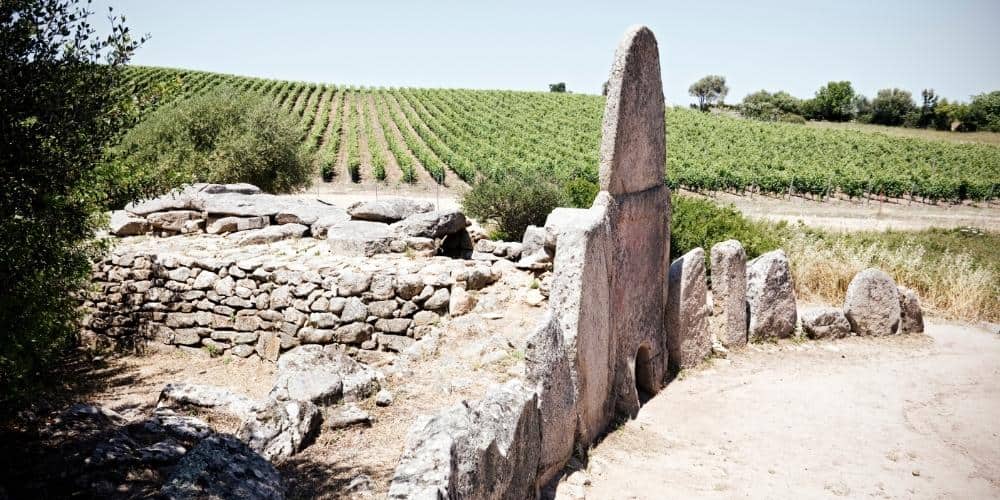
Tomb of the Giants of Su Mont'e s'Abe
As we said, Sardinia is the land of giants and fairies. Among the most important signs of its past, popular imagination has given a magical meaning over the centuries. The Tombs of the Giants are colossal tombs from the Nuragic period found throughout most of the island. Their plan resembles a bull's snout, an animal that symbolises male divinity, strength and power. They are immediately recognisable because the outer facade is made up of stones driven vertically into the earth and arranged in a semicircle.
The mystery surrounding these constructions is due to the enormous bones found inside them...the bones of giants. There are three in the Arzachena area of the Costa Smeralda: Coddu Vecchiu, Capichera and Li Lolghi. Three kilometres from Calangianus, in the province of Sassari, there is the Pascaredda Tomb of the Giants, and in Olbia the tomb of Su Mont'e s'Abe.
The Domus de Janas (namely, the Fairy Houses) are even more ancient: they belong to the pre-Nuragic civilisation. Popular tradition held that they were the dwellings of small legendary creatures always intent on precious sewing fabrics with their golden looms while singing sweet melodies. Actually, they are tombs dug into the rock (about 3500 in the whole of Sardinia) in such a way as to reproduce the dwellings of the living. The Janas, however, are one of the most significant magical creatures in Sardinian culture. It is said that at nightfall, near their homes, you can still hear the sound of the looms on which they weave tirelessly.
Among the fairy houses in North Sardinia, in the village of Sedini near Castelsardo, the Domus de Janas "La Rocca" is definitely worth a visit. Other sites include S'Incantu, a few kilometres from Alghero, dating from between 3200 and 2600 BC and decorated with all the typical motifs of the pre-Nuragic age, and the necropolis of Sant'Andrea Priu in Logudoro.
Stone stories and temples 5000 years old

Dolmen
The history of this small world in the middle of the sea seems to be engraved in stone. It is just like the pages of a book. In the territory of Martis, in Anglona, there is a millenary petrified forest, unique in its genre: the Carrucana forest, a true mystery of nature.
Among the most typical expressions of megalithism in Sardinia are constructions such as dolmens and menhirs. Among these, the dolmen Sa Coveccada, in the municipality of Mores in the province of Sassari, the largest on the island, is worth a visit.
Our journey through Sardinia's oldest history concludes with the Monte d'Accoddi altar temple, an unparalleled monument in the Mediterranean basin. It dates back five thousand years and is a unique ziggurat in Europe, identical to Mesopotamian temples of the same era, although it has no direct connection. It is located near the “old” 131 state road near Porto Torres and was brought to light in the mid-20th century by excavating a small hill in the middle of a plain...
What to do in North Sardinia: find out the quality of local craftsmanship

Sardinian filigree jewel
The complex heritage of Sardinian handicrafts embodies a historical identity that goes back to prehistoric times. It is the expression of a culture handed down over the centuries, a true folk art with clear elements that distinguish it from all others in its techniques, recurrent designs and figures, motifs, and colours.
The filigree: folklore, magic, and tradition

Sardinian wedding ring
As we have said, Sardinian culture is rich in magical symbolism. Legend has it that, in their dwellings, the Janas spent their time weaving gold and silver threads with precious stones. From their hands came splendid and magical jewellery (sas prendas), which thus took on a symbolic as well as ornamental function, a value that has remained intact to this day.
The technique of Sardinian filigree, honeycombing and granulation are ancient craft skills with which typical Sardinian jewellery is created. Among the most famous and significant ones are the Fede Sarda (Sardinian wedding ring), the button and Su Coccu. The filigree, with its very fine threads, gives birth to ethereal and light creations, the Sardinian wedding ring is a symbol of a bond of love; buttons were handed down from mother to daughter and were a symbol of good luck and fertility. Su Coccu is a very ancient good luck charm that can defend the person wearing it from the evil eye, negative energies and influences. These objects are made all over Sardinia, we see them adorning traditional clothes, and they can be bought in handicraft shops, especially in tourist centres.
Pattada knives
From the earliest times, the Sardinian people have been skilled forgers dedicated to hunting and warfare. The knife has always been part of the traditional accessories of these people, as the bronzetti (bronze statuettes typical of the Nuragic age) testify. Moreover, when the girl accepted the ring as a gift in engagement rituals, she would reciprocate by giving her betrothed a knife with a horn handle. The most famous switchblade on the island is called resolza or arresoja and the most important centre for its production is in Pattada. The typical pattadese (as it is called) has a mouflon horn handle, while the blade can be made of steel or damask. Curiosity about it: when it was given as a sign of friendship, it was given holding it by the blade to offer the handle.
Castelsardo baskets

Castelsardo is famous worldwide for its handmade baskets, made using weaving techniques handed down from generation to generation. Still today, in the medieval village streets, you can meet women who spend hours creating baskets with colourful decorations. Initially, people used dwarf palms, but today they are replaced by raffia as the palm tree has become a protected species. Typical of this town are baskets and corbules (truncated cone-shaped objects).
Carpets of Aggius and Nule
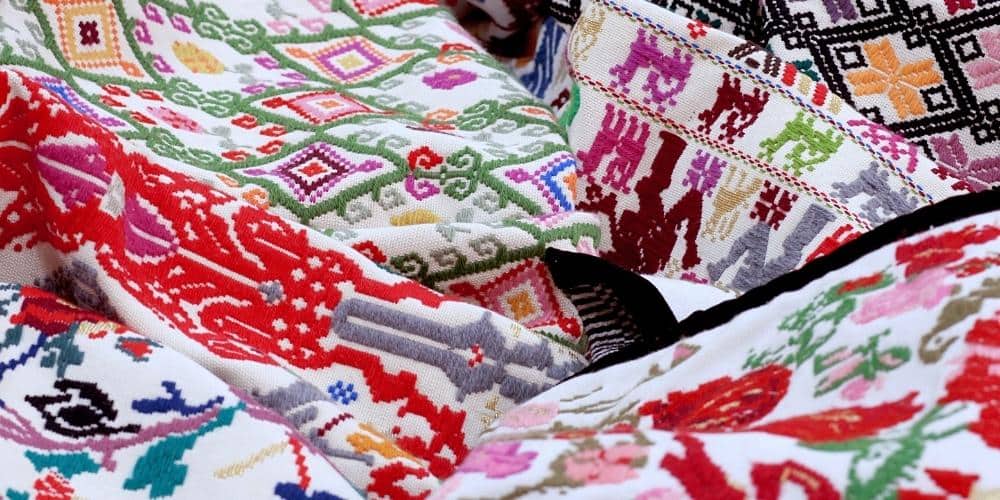
Carpets of Aggius and Nule
The traditional Aggius carpet is the greatest expression of textile craftsmanship in northern Sardinia, an art handed down by women. It is made from wool, linen, and cotton to create a perfect succession of weaves, coloured lines, shapes maintained over the centuries and chromatic solid contrasts. Another major centre for handcrafted carpets is Nule. The carpets of Nule have an ancient tradition that has been handed down from mother to daughter: they are double-faced carpets with a very dense fabric with precise designs and colour combinations.
Red coral from Alghero

The king of Alghero's production is coral, an ancient practice that dates back to the Ancient Romans. The Red Coral needs special living conditions, which, here on the Coral Riviera, give rise to one of the finest qualities in the whole Mediterranean, famous for its intense ruby colour. In the old town centre, you will find shops where you can buy necklaces, bracelets and earrings made from this local excellence.
Gallura cork

Cork is considered the "soft gold of Sardinia" and has been used for more than 3,000 years to produce a variety of objects, from trays, chopping boards and corks to more contemporary jewellery, clothing, bags and clutch bags. The advantages of cork? It is environmentally friendly, stain-resistant, waterproof, soft, malleable, and does not spoil. The village of Calangianus in Gallura is one of the world's largest cork producers.
North Sardinia museums: crafts, ancient customs, and history

Doria Castle, Castelsardo, home of the Museum of Mediterranean Interweaving
Of all the museums you can visit in the North of the island, we have selected the best representing the identity of the Sardinian people.
Culter Museum in Pattada. The history of the town of Pattada has been linked to knives production since the second millennium BC. The International Knife Museum has two main sections, one dedicated to the origins of the Sardinian knife and the other to international knives.
MIM - Museo dell'Intreccio Mediterraneo in Castelsardo (or Mediterranean Interweaving Museum of Castelsardo). It is located inside the medieval Doria Castle, which dominates the village below. On display are artefacts made by weaving vegetable fibres from Castelsardo itself, Sardinia, and the entire Mediterranean area.
Coral Museum in Alghero. The Coral Museum is located in an Art Nouveau villa. It tells a very important piece of Alghero's identity through a fascinating discovery journey of the Mediterranean's red gold: the Corallium Rubrum. The town is also home to the Aquarium Rubrum, the first live coral aquarium in Italy open to the public where you can admire live corals.
Oliva Carta Cannas Ethnographic Museum and Museum of Banditry in Aggius. The Oliva Carta Cannas Ethnographic Museum is an exciting dive into the culture and traditions of Gallura and Sardinia and also houses the “Permanent Exhibition of Aggese Carpet”. As for the Museum of Banditry, the town of Aggius was the fulcrum of Gallura banditry for about three centuries, from the mid-sixteenth century to the mid-nineteenth century. The four rooms display interesting documentation and objects worth seeing.
Museum of the Valley of the Nuraghi of Logudoro-Meilogu of Torralba. It houses a large part of the artefacts found at the Nuragic complex of Santu Antine. It illustrates its construction characteristics, offering a significant testimony to the culture of the Nuragic civilisation.
Galluras Ethnographic Museum - "the museum of the Femina Agabbadora" in Luras. Among the many legendary figures of Sardinian folklore, the Accabbadora is one of the most fascinating, mysterious, and enigmatic. Sa femina agabbadora was a woman who brought death to the terminally ill and was called by their families to put an end to their suffering. A sort of archaic euthanasia practised in small rural villages where families were too poor to care for a loved one in that condition. The first ethnographic museum in Gallura is a private project in which the typical environments of Gallura's civilisation have been faithfully reconstructed.
The delicacies of local food and wine

Sardinian myrtle
Sardinia is a land with a very long agro-pastoral and maritime tradition. Here, family, hospitality and conviviality are among the most important values. Moments spent with relatives and friends are significant, and the greatest protagonist on these occasions is food. The island's cuisine comprises famous traditional dishes from all over the region and more local delicacies to be tasted in homes, restaurants that respect the original traditional recipes, or at most succulent country festivals in Italy.
The typical dishes of North Sardinia

Lobster Catalan style
Malloreddus (a typical pasta), porcetto (or tiny piglet) and seadas carry the Sardinian flag everywhere. On a visit to Gallura, you should try zuppa gallurese (a poor man's dish of bread, cheese and sheep's broth) and chiusoni (gnocchi typical of the area). In Sassari, traditional dishes include snails, "monzette" (a variety of snails), favata alla sassarese (a first course with broad beans) and zimino (grilled beef offal). In Alghero, try the lobster catalan and the octopus agliata, and in Castelsardo, spaghetti al mirto (made with dried, crushed myrtle sautéed with onion). Other popular products of the area are artichokes, in particular the Sardinian spiny artichoke.
The wines from North Sardinia

The best thing to combine with a good dish is good wine. In the territory of Sassari, the Romangia area is made up of valleys and hills dotted with small vineyards mixed with olive groves. Here, one of the oldest terroirs in Italy produces wines such as Moscato di Sorso-Sennori. Torbato is a vine found only in Alghero and Cagnulari, indigenous to Sardinia, grown on the hills south of Sassari. However, the island's most representative vine, along with Cannonau, is Vermentino, which is mainly typical of the north. Vermentino di Gallura DOCG is a real delight.
What to do in North Sardinia: experience the faith of sacred events
Sardinia's people are linked to magic and spirituality. In this small world in the middle of the sea, the sacred and the profane are often mixed. It is a unique melting pot: Christian and pagan, past and present, fear and wonder. Events and traditions of Sardinia are the moments when the more magical and spiritual side explodes with all its force and takes possession of everyday life.
The undoubtedly boasts some of the most beautiful folklore events in Italy. If we want to get to know it, we cannot ignore its customs and beliefs' importance for the Sardinians. Of all the beautiful experiences the island has to offer, these are certainly among the most exciting.
In Sassari, on the eve of Our Lady of the Assumption feast on 15 August, there is the "Faradda di li Candareri" (or the march of the candlesticks). This is a festival at least five centuries old, deeply felt by the Sassaresi who honour the vow made to the Virgin who saved the city from the plague. Every year, about 100,000 visitors worldwide come here to see the procession. Eleven large wooden candles are carried on the shoulders of the people to the Church of Santa Maria di Betlem. Since 2013, the Faradda has been part of the Italian large shoulder-borne processional structures, intangible cultural heritage of UNESCO. The candlesticks are carried by representatives of the twelve gremi (the city's arts and crafts associations). Along the route, the bearers make the candlesticks perform evolutions in auspicious dance.
The rites of Holy Week are also very popular with the island's inhabitants, with evocative ceremonies rooted in medieval tradition. In Alghero and Castelsardo, the procession of the mysteries (S'Iscravamentu or Desclavament) is celebrated. Lu Lunissanti in Castelsardo is one of the oldest and best-known Holy Week rites in Sardinia, while Alghero maintains strong links with Catalonia. Christmas here in Sardinia also has a different flavour. In the Sardinian Christmas tradition, the pastoral culture and the importance to the family are evident.
What to do in North Sardinia: experience the charm of folklore

Sardinian traditional dress
The Sardinian island boasts some of Italy's most famous festivals and music events, costume parades and horse races, and much more.
Sassari is also home to the island's largest secular event: the Cavalcata Sarda, which takes place on the penultimate Sunday in May. Every year, over three thousand costumes representing municipalities from all over Sardinia offer an unforgettable spectacle. In the morning, the participants dressed in the traditional dress of their country and the knights parade through the streets of the city centre, paying tribute to the spectators and the authorities with typical culinary products. The procession is closed by over three hundred knights from all over Sardinia. In the early afternoon, it is the turn of the pariglie, adrenaline-filled displays of skill in which the bravest Sardinian riders put on a show with acrobatics on the horses running at the Pinna racetrack. The event also comprises the music of the island's folk groups, who perform in the review of traditional Sardinian songs and dances. So, after a day that is impossible to forget, the sounds of launeddas, organittu, accordion and "cantu a tenores" (tenores song, among the UNESCO "Oral and Intangible Heritage of Humanity") close the festival, in the setting of Piazza d'Italia.
Douglas Goldring, describing Gallura, said: «It is a strange, desolate, strangely exciting region, this Gallura, wild, almost depopulated, and yet not without a singular charm». It is said that spring is the best season to visit this part of Sardinia: the colours are more vibrant, the scents are more intense, and the flavours are more genuine. The customs and traditions here are different from the rest of the island, and Primavera in Gallura (namely: spring in Gallura) was created to safeguard this cultural and historical heritage. One of the most important events in Sardinia is undoubtedly it.
What to see and what to do in North Sardinia: check out Salude & Trigu
🥇 Visit Italy’s brand partnership

Sardinian Flag
Here it is. The Quattro Mori (the Four Moors) flag waves proudly in the sky as if to say goodbye to the day that is leaving. Our journey of discovery through North Sardinia is over. A written text will never be enough to get to know it. There are no words that can make you feel the scent of juniper and mastic, the sound of the sea breaking on the rocks, the sound of an accordion, the chill of the Mistral on your skin or the roughness of the granite rocks. But above all, there are no words that can describe the sound of the silence of the Sardinian valleys, or that can convey the sense of reverence and respect that one feels when stopping to observe the landscapes of an island where the land speaks a magical and ancient language that grips the heart.
The most authentic way to enjoy all this on your next trip to North Sardinia? We suggest you always keep an eye on the beautiful Salude & Trigu program of the Sassari's Chamber of Commerce: a true container of events and culture to transform this magical land into a wonderful experience to remember forever.
Discover more about Salute & Trigu eventsAbout the author
Written on 24/10/2023

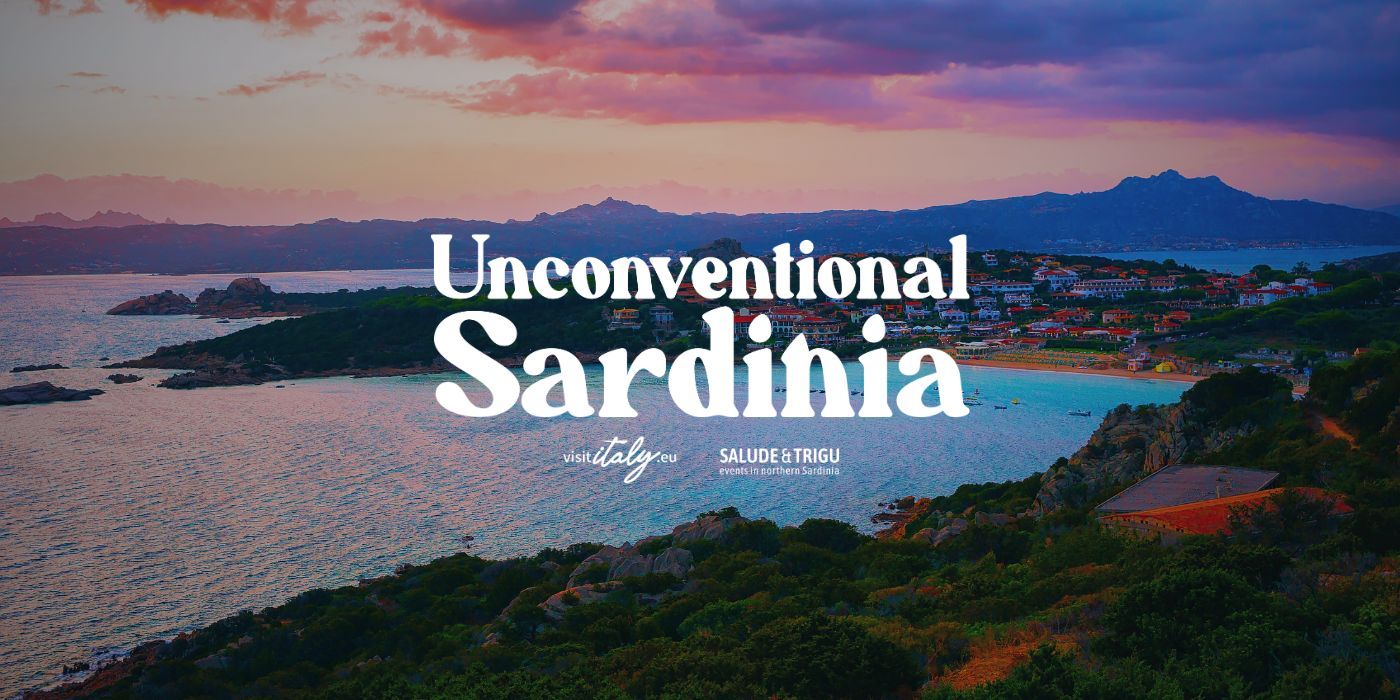


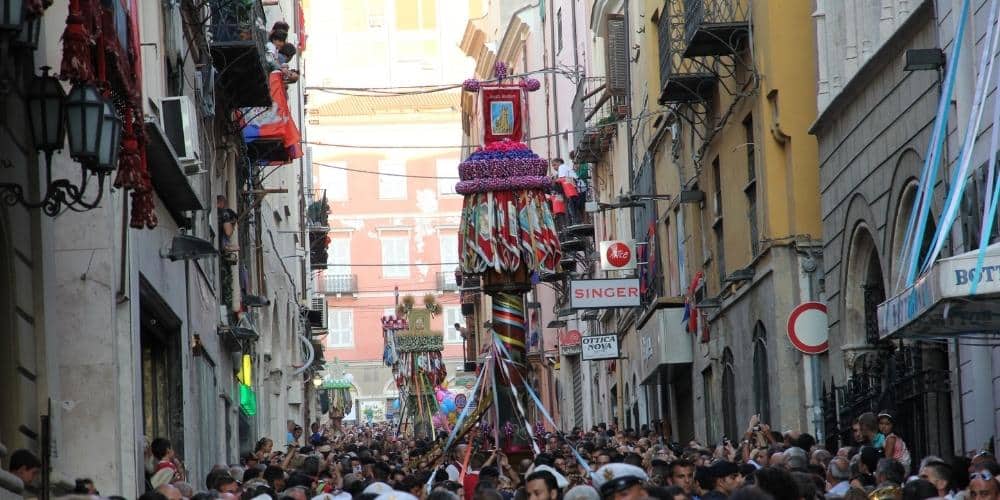

Chiara Musino
The super guide to North Sardinia to discover what to see and do on your next trip, for a 2026 filled with unique beaches, places, and traditions.